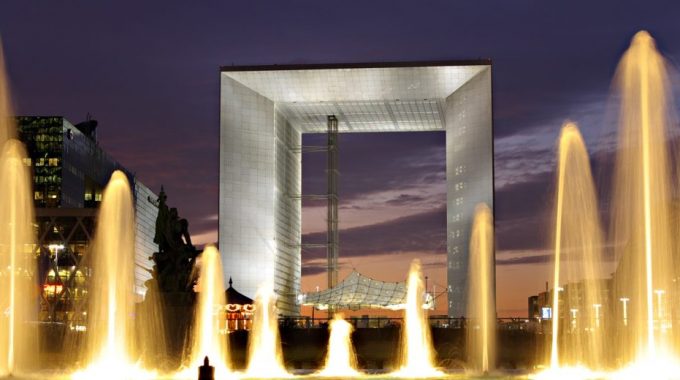
Death… and resurrection
“The Christian faith is all about death… and resurrection!”
That memorable take-away from Philip Jenkins’ excellent book on Europe, God’s Continent, continues to stir my hope for this part of our world which has been most shaped by the story of Jesus–and by its rejection.
For the Easter message we have been commemorating this weekend is a message of hope for Europe: that death is followed by new life, and that the Holy Spirit is in the business of breaking out in new, unexpected ways in fresh resurrection life when all seemed to be lost.
Many have been the predictions of the Church’s demise in Europe, some gleeful, others regretful. However, just as with the original Easter narrative, the story is not over. What seems to be the end can turn out to be a new beginning.
Despite all the talk of Europe becoming religiously pluralistic and post-Christian, the Christian faith remains the frame of reference for national cultures all across the continent. Christianity remains the dominant culture, what sociologists call the Leitkultur. While the pluralist ethos views all religions as being of equal value, most secular Europeans still regard Christianity as ‘their’ religion when seeking spiritual meaning.
Gut-level
The shocked response to the Notre Dame fire in Paris last week – both in France and globally – revealed at least a gut-level awareness of the significance of this building beyond its obvious attraction for tourists; it is one of Europe’s top tourist venues with around 14 million visitors annually – over 38,000 daily!
Like all cathedrals, Notre Dame stands as a silent witness to the story that has profoundly shaped Europe. In medieval society, the cathedral reflected the greater reality of the unseen world, embodying the integration of society around Christ. The cathedral’s crossform–with the transept providing the horizontal of the cross, intersecting at the altar and separating the nave from the choir and sanctuary–also mirrored the human head, arms, torso, legs. Man was a microcosm of the macrocosmos. Man was the temple of God: the altar was the heart.
Cathedrals were central to cultural developments in Europe, integrating all art forms, including architecture, masonry, sculpture, painting, stained glass, weaving, tapestry, music and liturgical choreography. Almost everyone in the city was engaged in the construction as a common project.
Choirmasters at Notre Dame pioneered developments in musical notation of rhythm as well as pitch. From there, the motet (from the French ‘mot’ for ‘word’) spread throughout Europe in the thirteenth century, introducing four-part harmony – soprano, alto, tenor and bass.
Testimony
When I learned about the fire last week during a stopover in Beijing flying back to Europe from New Zealand, George Weigel’s book, The Cube and the Cathedral, came to mind. The book’s title contrasts the worldviews represented by two iconic Parisian buildings: Notre Dame Cathedral and the cube-shaped Defence Arch, La Grande Arche, built as a monument to humanity and humanitarian ideals. Weigel suggests the 110 metre-high cube is a deliberate secular statement that humanism can swallow up superstition and religion, represented by the ‘merely’ 68 metre-high cathedral. He asks which of the two worldviews can sustain the future.
Jean-Claude Guillebaud, the French author of Re-founding the World: The Western Testament (2001), answers that the 20th century has been a century of disillusion. Marxism, evolution, socialism, hedonism, consumerism, globalisation, humanism, scientism and militarism have all failed us. Christianity invented the idea of the individual, he argues, as well as the notion of equality. The future, he believes, must be re-founded on Judeo-Christian foundations.
The fire also recalled to my mind the testimony I heard at a European Prayer Breakfast in Brussels of French television presentator and comedienne, Frigide Barjot (a takeoff of Brigitte Bardot). A 50-year-old, blonde extrovert self-described as an ‘anarchist of love’, Barjot became a national figure in 2013 when she led million-strong marches opposing legislation introducing gay marriage, insisting that every child should have the right to have one father and one mother. From a non-religious background with divorced parents, Barjot told about a turning point at a desperate phase in her life when a friend had taken her to an organ concert in Notre Dame. She had sat transfixed by an unexpected sense of God’s presence, remaining long after the concert ended and prayers had begun the next service. The sermon on God’s love that followed transformed her life forever.
Barjot’s personal resurrection from spiritual death has happened, is happening and will happen many times on personal and community-wide levels. God has not finished with Europe yet! As Easter tells us, the game is far from over.
This is why we run the State of Europe Forum this year in Bucharest, a Master’s degree programme in Missional Leadership and European Studies starting in June (17-20) in Amsterdam, and the Masterclass in European Studies in Amsterdam this summer (July 30-Aug 3). Join us!
Jeff Fountain
Director Schuman Centre
For more weekly words from Jeff, visit weeklyword.eu.

This Post Has 0 Comments